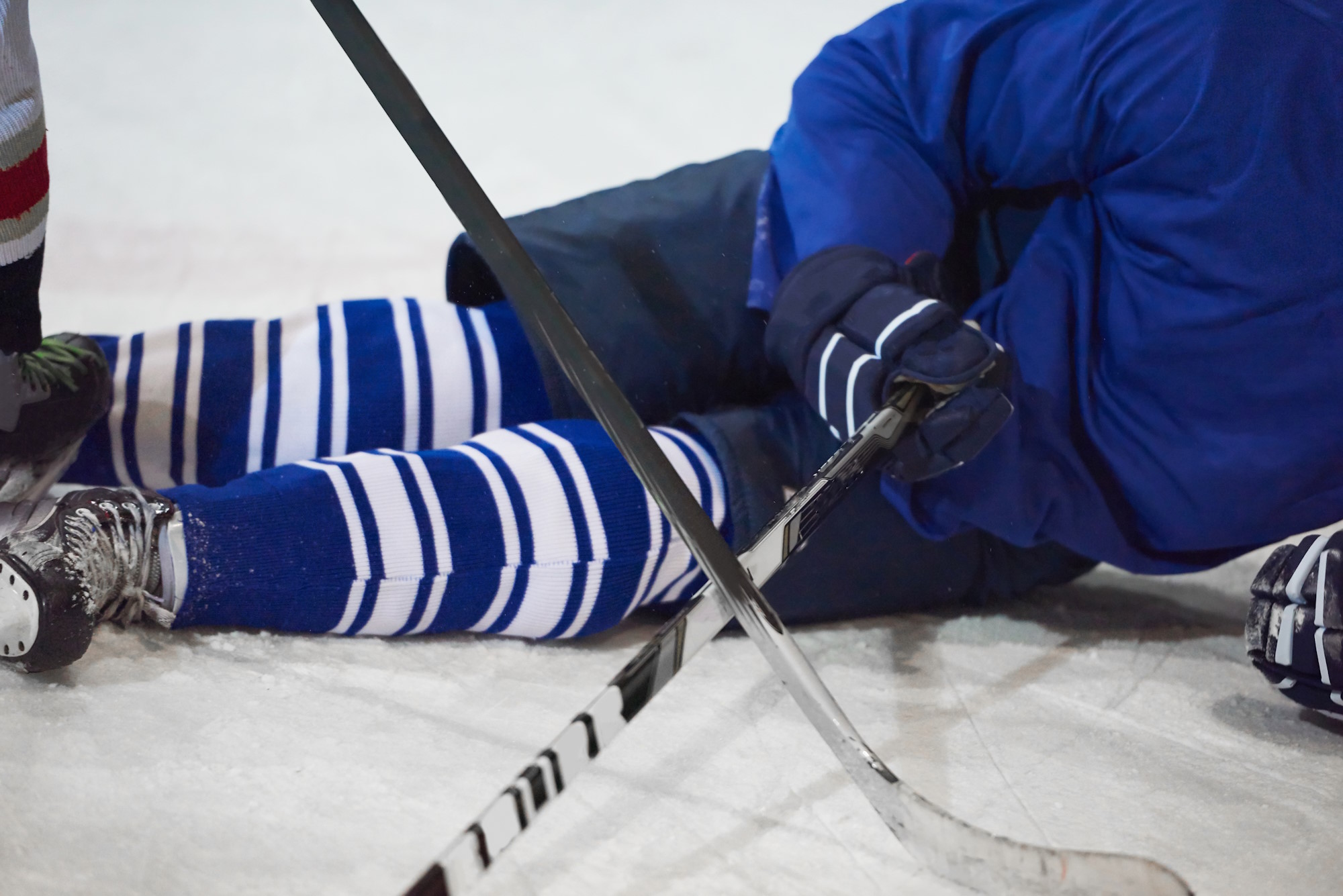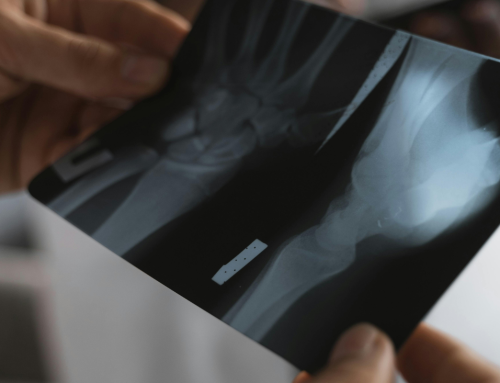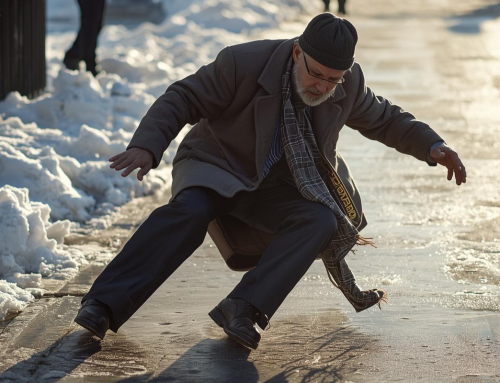Hockey is Canada’s game—but it comes with serious injury risks. From minor hockey leagues to the NHL, fractures are an unavoidable part of the sport. For players at any level, a broken bone doesn’t just mean pain. It means weeks or months away from the ice, missed games, and the risk of losing your competitive edge.
LIPUS (Low-Intensity Pulsed Ultrasound) therapy is helping hockey players across Canada heal faster and return to the game stronger. Here’s what every player, parent, and coach needs to know about the most common hockey injuries and how to accelerate recovery.

Key Takeaways
- Most common hockey fractures: Clavicle (collarbone), wrist, hand, facial bones, and ribs.
- Clavicle fractures are the #1 hockey injury, often from body checks and falls.
- Standard healing time: 6-12 weeks for most fractures; can sideline players for an entire season.
- LIPUS therapy accelerates healing by up to 38% for fresh fractures.
- Professional teams use LIPUS: Calgary Flames team physicians rely on it for faster player recovery.
- Safe for all ages: Youth players, juniors, and professionals can benefit.
- Home treatment: Just 20 minutes daily with the Melmak LIPUS device.
The Reality of Hockey Injuries in Canada
Hockey's combination of speed, physical contact, hard boards, and ice creates the perfect conditions for fractures. Fractures account for a significant portion of time-loss injuries across all levels of play—from Tim Bits to professional leagues.
The challenge for players:
- Missing critical games during playoffs or tournaments
- Losing conditioning and skills during recovery
- Risk of re-injury if returning too soon
- Psychological impact of extended time away from teammates
The challenge for parents and coaches:
- Balancing safe recovery with player eagerness to return
- Managing expectations around healing timelines
- Costs associated with extended medical care
- Concerns about long-term impact on player development
Most Common Hockey Injuries: Fractures by Location
1. Clavicle (Collarbone) Fractures
How it happens: Direct impact from body checks, falling onto the shoulder on ice, or collision with boards. The clavicle is one of the most frequently broken bones in hockey at all competitive levels.
Typical healing time: 6-12 weeks for adults; 3-6 weeks for younger players
Why it's problematic: The clavicle connects your shoulder to your chest wall. Until it heals completely, you can't shoot, check, or handle the puck properly. Many players try to return too soon and risk re-injury.
LIPUS advantage: Clavicle fractures are notorious for delayed healing. LIPUS therapy delivers the mechanical signals needed to accelerate bone formation, helping players return to full contact sooner and more safely.
2. Wrist and Hand Fractures
How it happens: Falling on outstretched hands, slash injuries from sticks, blocking shots, or getting caught in the boards during a collision.
Typical healing time: 4-8 weeks depending on which bone is broken
Why it's problematic: Grip strength is essential for stick handling and shooting. Even after the cast comes off, weakness and stiffness can persist for weeks, affecting performance.
Recovery insight: Hand and wrist fractures heal relatively quickly, but LIPUS therapy can shave weeks off recovery time—critical during playoff season or for players trying to maintain scholarships or professional contracts.
3. Facial Fractures
How it happens: High sticks, pucks to the face, collisions, or fights. Despite mandatory visors in many leagues, facial fractures still occur—particularly to the nose, cheekbones, and jaw.
Typical healing time: 4-8 weeks for nasal fractures; 6-12 weeks for more complex facial bones
Why it's problematic: Facial fractures can affect breathing and eating and require special protective equipment during healing. Players often feel self-conscious about facial injuries affecting their appearance.
4. Rib Fractures
How it happens: Body checks into the boards, falls, or direct impact from pucks or sticks.
Typical healing time: 6-8 weeks
Why it's problematic: Every breath, cough, or twist causes pain. Playing hockey with fractured ribs is nearly impossible and risks puncturing a lung if ribs shift.
Recovery challenge: Rib fractures can't be immobilized like other bones, making proper healing more difficult. LIPUS provides mechanical stimulation that supports natural healing without requiring a cast.
5. Finger Fractures
How it happens: Pucks hitting unprotected fingers, getting caught in equipment, or impact during falls.
Typical healing time: 3-4 weeks
Why it's problematic: Even "minor" finger fractures affect stick handling, passing, and shooting. Many players try to play through the pain and end up with chronic issues.
How LIPUS Therapy Accelerates Hockey Injury Recovery
Low-Intensity Pulsed Ultrasound (LIPUS) isn't just theory—it's proven technology trusted by professional sports medicine teams worldwide, including right here in Canada.
How LIPUS Works
LIPUS delivers precise, painless sound waves to the fracture site. These mechanical signals:
- Activate bone-building cells (osteoblasts)
- Accelerate the transformation from soft callus to hard bone
- Increase blood flow to the injury site
- Speed the entire healing cascade by up to 38%
The result: Players heal faster naturally. No drugs, no surgery, just enhanced biology.
Real-World Results: Professional Teams Trust LIPUS
The Calgary Flames team physicians use LIPUS therapy to get injured players back in the game faster. Learn how professional teams rely on LIPUS for athlete recovery.
When professional organizations invest in LIPUS technology, it speaks volumes about its effectiveness. These teams can't afford to risk player health on unproven treatments—they need results.
Using LIPUS at Home
The Melmak LIPUS device makes professional-grade therapy accessible for players at any level:
- Just 20 minutes daily
- Works through casts and bandages
- Completely painless
- FDA-approved and clinically proven
- One-button operation
Perfect for:
- Minor hockey players recovering from fractures
- Junior and collegiate athletes on tight schedules
- Adult league players balancing work and recovery
- Anyone who can't access professional sports medicine facilities regularly
Who Benefits Most from LIPUS for Hockey Injuries?
1. Youth Players (Ages 10-18)
Young athletes heal faster than adults naturally, but LIPUS can accelerate recovery even further—critical during important development years when missing a season impacts skill progression and team dynamics. Parent perspective: LIPUS provides peace of mind that you're doing everything possible to support safe, complete healing before your child returns to contact.
2. Junior and College Players
At this level, injuries can affect scholarships, draft prospects, and career trajectories.
Faster healing means:
- Less time away from scouts and coaches
- Maintaining conditioning and skills
- Staying connected to the team
- Reducing stress and anxiety about the recovery timeline
3. Professional and Semi-Professional Players
When hockey is your career, every game missed is income lost and opportunities gone.
LIPUS therapy helps professional players:
✓ Return to play weeks earlier safely
✓ Maintain muscle mass during recovery
✓ Meet contract obligations
✓ Extend career longevity by healing completely
4. Adult Rec League Players
Even if hockey is "just for fun", injuries disrupt your life, affecting work, family time, and fitness. LIPUS helps recreational players get back to the activities they love without prolonged disruption.
Beyond Fractures: Complete Hockey Injury Recovery
While LIPUS specifically targets fracture healing, complete recovery requires a comprehensive approach:
Nutrition for Hockey Players
- Protein: 1.5-2.0 g per kg of body weight to support muscle maintenance and bone healing
- Calcium & Vitamin D: Essential for bone repair (many Canadian players are vitamin D deficient during winter months)
- Hydration: Supports all metabolic processes, including bone remodelling
Physical Therapy & Conditioning
Once cleared by your doctor:
- Work with a physiotherapist experienced in hockey injuries
- Focus on regaining strength, flexibility, and sport-specific movements
- Don't rush back to contact. Earn your way back through progression protocols
- Address any compensatory movement patterns developed during injury
Mental Recovery
The psychological aspect of injury recovery is often overlooked:
- Stay connected to your team (attend practices, games)
- Set small, achievable recovery milestones
- Work with sports psychologists if anxiety about re-injury develops
- Use visualization techniques to maintain mental sharpness
When to Consider LIPUS Therapy
Start LIPUS as early as possible after fracture diagnosis for maximum benefit. The device is most effective during the active healing phases (weeks 1-8) but can still support:
- Delayed unions (fractures healing slower than expected)
- Non-unions (fractures that have stopped healing)
- Final bone remodelling and strengthening
Talk to your doctor or sports medicine physician about adding LIPUS if:
- You want to do everything possible to heal faster.
- You're at risk for slow healing (smokers, certain medications, previous complications).
- You have a high-stakes game or tournament on the horizon.
- Standard healing timelines would cause you to miss critical opportunities.
Don't Let an Injury End Your Season
Hockey injuries are part of the game, but lengthy recoveries don't have to be. With proper medical care, optimal nutrition, and advanced therapies like LIPUS, players across Canada are healing faster and returning to the ice stronger.
The Melmak LIPUS device brings professional-level recovery technology into your home. Whether you're a parent supporting a minor hockey player or an athlete managing your own recovery, LIPUS offers a safe, proven way to accelerate healing.





